Understanding what we eat and drink
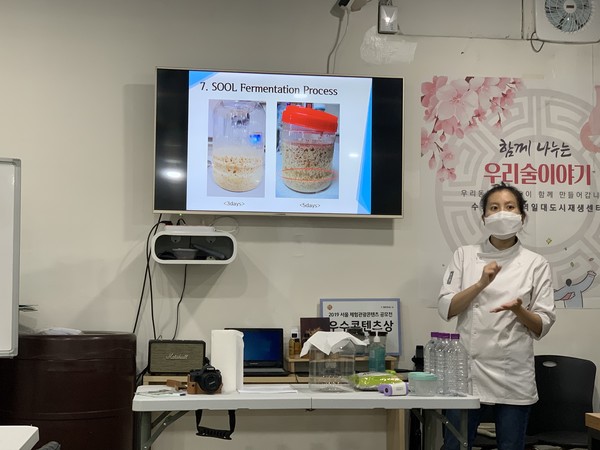
FERMENTATION HAS been part of many cultures’ traditional foods and drinks. Kimchi, wine, and kombucha are just a few examples of fermented food and drinks that have meaningful historical origins, existing in products we consume on a regular basis. Experts have proved that fermented foods and drinks have many health benefits such as providing probiotics that fight pathogenic bacteria[1]. Understanding fermentation is a chance to appreciate the complex processes behind the preparation of what we eat, as such tasks require great time and care. One-day classes for making fermented products such as mak-geol-li, baguettes, and rejuvelac provide you with a chance to learn and appreciate the fascinating world of fermented products.
Exploring Korean Mak-geol-li: Soo Guk
Mak-geol-li is a traditional fermented rice drink and is the oldest alcoholic beverage in Korean history. The class, named Soo Guk, is run by a Korean alcohol expert, Jang Se-ri, who teaches how to make mak-geol-li and the history of Korean alcohol. She gives a brief lesson on the history of Korean alcohol and the significance of the fermentation process, comparing it to other cultures’ alcoholic drinks such as Japanese Kuchikamizake, which is made with rice and spit as a fermentation starter. The class is held in a modern-style kitchen and the teacher maintains a professional attitude throughout the class, giving technical instructions on how to properly handle the different ingredients.

To make the mak-geol-li, Soo Guk uses glutinous rice, water, and nu-ruk, a traditional Korean fermentation starter made from wheat. Jang first instructed us to cool the cooked rice and add the ingredients. We then put it in a big jar for it to ferment. The process itself was simple, as the real fermentation process happens when we take it home and leave it in a cool space. The enzymes in the nu-ruk eat up the sugar from the glutinous rice, and this produces alcohol. The class provided a good balance between learning and hands-on experience.
The students can see that Jang has a genuine passion and appreciation for mak-geol-li. In an interview with The Yonsei Annals, Jang answered that she is an alcohol enthusiast and wanted both the locals and foreigners to experience the diversity of flavors unique to handmade mak-geol-li. She explains that even if we were in the same class, used the same ingredients, and fermented it for the same period of time, our finished mak-geol-lis would all taste slightly different due to the difference in the fermentation environment and the varied behavior of the enzymes. She explains that the beauty of fermentation lies in how the activity of microorganisms varies drastically in each bottle and how every product turns out differently.
Location: Seoul, Gwangjin-gu, Achasan-ro 49-gil, 9
Class Fee: ₩4,000 per person
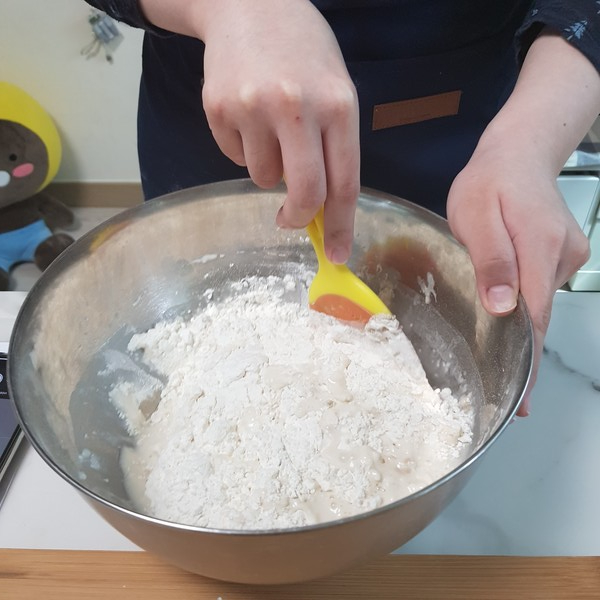
Returning to the Basics: Bread Making in Patorong
Patorong, with its cozy home kitchen environment, welcomes anyone to come and hand-bake their favorite desserts, pastries, bread, and more. The students who want to go to Patorong can reserve a lesson with instructor Park Hyo-Jung to learn about baked goods. The instructor maintains a very welcoming attitude so that it feels like the students are baking at home with their families. The baguette classes teach you how to make the most classic, simple fermented bread that we frequently consume.
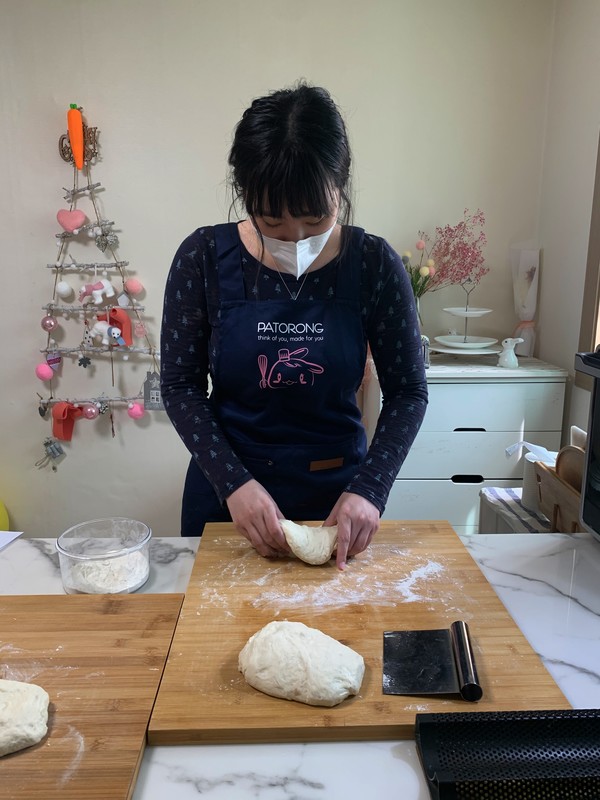
The process of baking baguettes varies based on how much time the baker chooses to spend. Park insisted we do an overnight fermentation to improve the quality of the taste, texture, and aroma of the bread. The class used dry yeast for the fermentation starter as well as some old dough that has already finished the fermentation process. After the bread finally finished baking, Park cut one of the baguettes open to see whether there were nice air pockets inside the bread; the size and density of the pockets can indicate whether the fermentation had gone good or bad.
Park explains that modern bakery franchises and factories can make baguettes quite easily with the use of machines. It would take less than half a day to produce the bread without the overnight fermentation. However, the beauty of home baking is that we can spend a lot of time with the dough and observe how it changes over time.
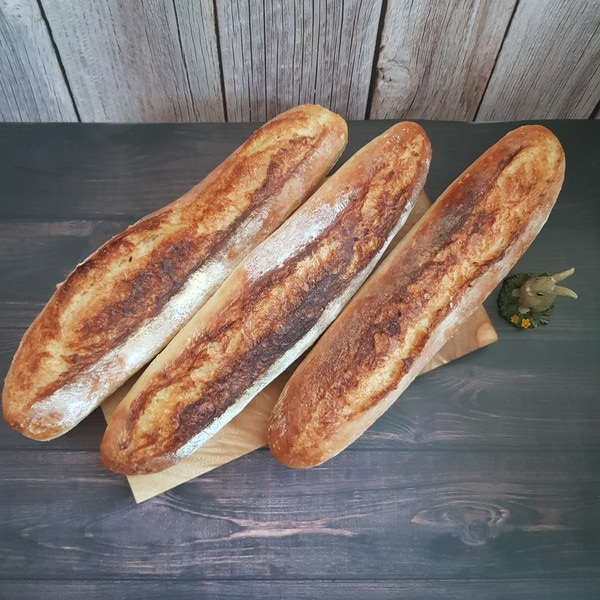
Location: Seoul, Songpa-gu, Baekjegobun-ro 31-gil, 17, Room #301
Class Fee: ₩100,000 per person
Vegan Heaven: Food for Everyone
Vegan Heaven is a restaurant and classroom dedicated to vegans as well as anyone interested in pursuing veganism. The store offers various vegan dishes as well as everyday ingredients such as vegan butter and cheese. The class they offer teaches students how to make rejuvelac, which is fermented grain water. People can make rejuvelac from most nuts and grains, including pistachios and chickpeas. Rejuvelac is one of the easiest fermentation starters as it simply requires the chosen grains and water. It takes two days to set up with one day for the grains to sprout, one day for the water to ferment with the sprouted grains. The time you ferment depends on how acidic you want your rejuvelac to be. There is no checking or stirring involved with it. According to Lim Jin-ah, the teacher and owner of the store, rejuvelac is an important concept for vegans as it is a new way of imitating the taste of dairy products. All of Vegan Heaven’s imitation dairy products use rejuvelac to ferment grains or nut milk into cheese, yogurt, or butter. Lim learned that normal dairy products like butter also get their flavor and aroma from fermentation, so including the process of fermentation for vegan foods would help to better imitate the particular taste of dairy products.

The class starts with Lim showing the different sprouted grains we can use to make rejuvelac, as well as the products made with each type of rejuvelac. She then allows the class to taste both the rejuvelac and the finished imitation-dairy product. Although they were different compared to the real dairy products, the funky flavors were still largely similar to that of butter and cheese. During the class, Lim explains the unique qualities of different types of grains that can be used to make rejuvelac. For example, she explains how using chickpeas gives the product a smooth and creamy quality, making it ideal for making butter or yogurt. Lim also teaches the class how to make vegan butter using cashew milk by adding ingredients like nutritional yeast and rejuvelac. All ingredients are blended and fermented for a few days, and the students can come back to the store to collect their finished sticks of butter. In addition, each member of the class took home chickpea sprouts as well as already started rejuvelac.
Rejuvelac is an easy way to learn about how the process of fermentation can be uniquely applied to create delicious vegan meals. Throughout the class, Lim emphasized the charm of vegan ingredients. There is a lot of experimentation involved and you can choose how you prepare your ingredients. Once you discover how to create the right ingredients such as vegan butter, you can cook amazing meals that do not imitate normal foods but have their own authentic beauty. Fermentation is an important part of the development of veganism as it not only helps diversify the flavor range of vegan dishes, but also adds unique health benefits on top of the nutrition-packed plant-based diet. Vegan meals largely rely on their ingredients, so the fermentation process, which interacts with the ingredients on a molecular level to introduce new textures and aroma to the food, becomes a critical component.
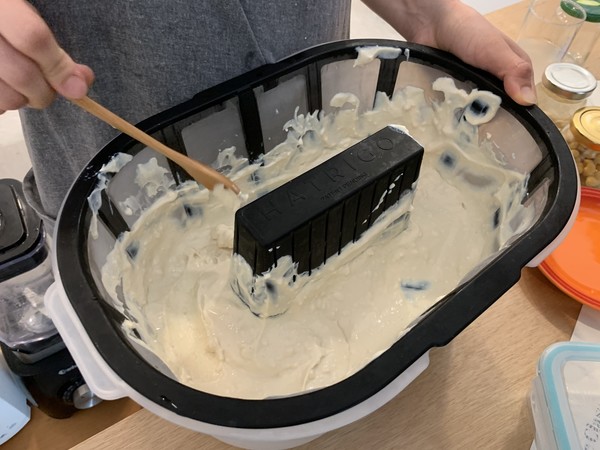
Location: Seoul, Gangdong-gu, Seongan-ro, 41
Class Fee: ₩50,000 per person
[1] Cleveland Clinic

